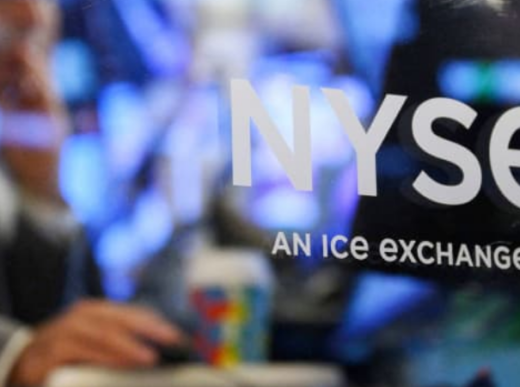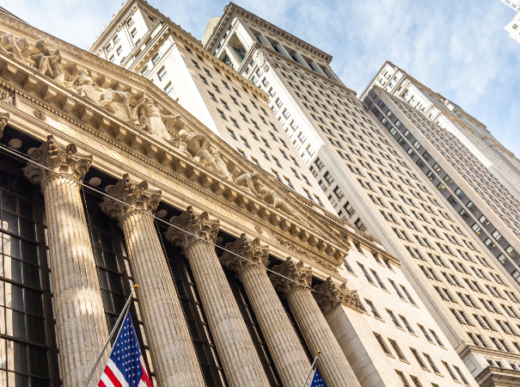The S&P 500 has undergone a substantial upsurge in the current year of 2023. Diminishing inflation and a resilient economy have contributed to quelling investors’ apprehensions of an imminent crisis, prompting them to engage in substantial buying activity.
In the absence of any indications pointing towards an upcoming recession, the market has seemingly integrated the notion of a gentle economic descent for the United States. Concurrently, there is growing clarity regarding the Federal Reserve’s intention to shift away from raising interest rates, a move expected to transpire sooner rather than later.
Another pivotal pillar bolstering this trajectory is the ameliorated outlook for corporate earnings. The decline in corporate profits observed over recent quarters has proven less severe than anticipated by many. As a collective influence, these factors have facilitated a robust rally of over 14% year-to-date for the S&P 500.
Yet, an undercurrent of doubt is emerging among certain investors regarding the feasibility of sustaining the bull market rally in the forthcoming months. Factors like tightening credit markets, interest rates at historically elevated levels, and substantial stock valuations are prompting these queries about the rally’s endurance.
Could Credit Market Volatility Derail the Bull Market?
One of the most significant factors contributing to the stagnation of the S&P 500 rally during this summer has been the apprehension regarding the creditworthiness of both the U.S. government and U.S. banks.
The initial indicators of trouble within the credit markets emerged in the early months of 2023. Escalating interest rates, coupled with losses stemming from commercial real estate holdings and exposure to cryptocurrency lending, sparked a crisis in the regional U.S. banking sector. This crisis culminated in the failures of Silicon Valley Bank, Signature Bank, and First Republic.
Swift regulatory interventions were enacted to stabilize the banking sector, yet Federal Reserve officials subsequently noted a tightening of U.S. credit market conditions subsequent to the crisis.
The unease among investors regarding the credit market deepened in August with Fitch Ratings downgrading the U.S. debt rating from its pristine AAA status to AA+ status. Fitch, among the leading bond ratings agencies alongside Moody’s and Standard & Poor’s, had never before lowered its U.S. credit rating. However, Standard & Poor’s had previously downgraded its rating to AA+ in 2011, maintaining this status ever since.
Although the AA+ ratings from Fitch and S&P translate to an exceptionally low likelihood of a U.S. default, concerns among investors likely arise from facing a second credit downgrade in a span of just 12 years.
Fitch also cautioned in August that the challenging conditions within the credit markets have heightened the possibility that the agency might need to downgrade the credit ratings of numerous U.S. banks, potentially encompassing entities like JPMorgan Chase (JPM) and Bank of America (BAC).
In 2011, the S&P 500 experienced a 19% decline from its peaks following S&P’s U.S. credit downgrade. According to Jeffrey Buchbinder, the Chief Equity Strategist at LPL Financial, the market sell-off triggered by the 2011 Fitch downgrade was relatively brief. He anticipates a similar limited negative impact from the recent S&P downgrade.
Indeed, the S&P 500 concluded 2011 with an ascent of more than 12% from its post-downgrade lows, followed by an additional 12% surge in the first quarter of 2012.
Buchbinder states, “While we don’t anticipate the U.S. debt situation causing the level of market volatility witnessed in 2011, LPL Research believes that stocks have slightly outpaced the fundamentals in the short term, and a 5-10% retreat is overdue.”
Monetary Policy Uncertainty Is a Risk for the Bull Market Rally
Another notable concern that could impact the S&P 500 rally in the upcoming months revolves around monetary policy. During July, the Federal Open Market Committee executed its eleventh consecutive interest rate hike since March 2022, propelling the fed funds target rate range to a 22-year peak, oscillating between 5.25% and 5.5%.
For investors, there’s a positive aspect in the form of the vigorous tightening measures undertaken by the Federal Reserve, which have precipitated a consistent decline in inflation trends. However, the flip side of the coin is that the most recent reading of the core personal consumption expenditures price index for June stood at 4.1%, surpassing the Fed’s long-term inflation target of a mere 2% by more than twofold.
The elevated interest rates translate into augmented borrowing costs for U.S. companies endeavoring to channel investments into expanding their operations, thereby exerting a dampening effect on economic growth. Furthermore, the escalated interest rates pertinent to credit cards, mortgages, and other forms of consumer debt instill a degree of reluctance among consumers to spend money, a dynamic that hinders the supportive role of consumer spending in bolstering the economy.
While investors hold out hope that the Federal Reserve will be poised to initiate a rate reduction in early 2024, insights gleaned from the latest minutes of the Federal Open Market Committee meeting indicate that Fed officials still perceive “significant upside risks to inflation which could necessitate further tightening of monetary policy.”
Could a Recession Derail the Stock Market Rally?
The Federal Reserve has now revised its outlook and no longer anticipates a U.S. recession occurring in either 2023 or 2024. However, economists are in agreement that the effects of the past year and a half of monetary policy tightening will manifest as a delayed, adverse impact on the economy moving forward.
The New York Fed’s Recession indicator currently suggests a 66% likelihood of a recession materializing within the upcoming 12 months.
In July, the Labor Department reported the addition of 187,000 jobs to the U.S. economy. Typically, job growth is indicative of an absence of imminent recession. However, the months of June and July mark the initial instance since the onset of the COVID-19 pandemic in 2020 when the economy registered job gains below the 200,000 mark consecutively.
Beyond the deceleration in economic activity, there exists an array of geopolitical risks that could act as triggers for an economic recession, potentially halting the momentum of the S&P 500 rally. Tensions have escalated between the U.S. and China, stemming from concerns of a potential military conflict involving Taiwan.
Furthermore, an escalation in the ongoing conflict between Russia and Ukraine has the potential to introduce heightened volatility within global energy prices. Additionally, the debates anticipated during the 2024 U.S. presidential election concerning issues like corporate tax increases or measures to address antitrust concerns within the big tech sector could potentially undermine the stock market’s momentum.
Steep Valuations Pose a Challenge for the S&P 500
Amidst the array of headline-associated risks confronting stock prices, a lesser-acknowledged menace to the 2023 stock market rally could potentially lie in the realm of stocks’ elevated valuation. The juxtaposition of adverse earnings growth coupled with ascending stock prices within the context of 2023 implies that investors are presently receiving reduced value for their investments in stocks.
The forward price-to-earnings ratio of the S&P 500 stands at 19.2, surpassing both its five-year average of 18.6 and its ten-year average of 17.4.
Broadening the temporal perspective reveals that the S&P 500’s Shiller PE ratio intimates a more pronounced overvaluation within the market. The Shiller PE ratio of the S&P 500, which factors in average inflation-adjusted earnings over a decade, is currently logged at 30.4. This figure is notably almost 80% higher than its historical norm of approximately 17.
Analysts Remain Bullish
Undoubtedly, the S&P 500 is poised to encounter a multitude of challenges throughout the upcoming 12 months. However, up to this point in 2023, the market has adeptly maneuvered through a complex landscape of risks. Anticipating the road ahead, analysts generally maintain an optimistic outlook, envisioning the stock market’s capacity to ascend even amidst a backdrop of concerns.
Presently, Wall Street analysts have established an average 12-month price target for the S&P 500 at 5,034, indicating a potential upside of approximately 14.1% from the current levels. This projected target also aligns with the consensus forecast that the S&P 500 will transcend its previous peak of around 4,818 from January 2022 and subsequently forge new all-time highs within the impending year.
Chairman of Sanders Morris Harris, George Ball, asserts that the amalgamation of escalating U.S. wages and low unemployment is likely adequate to sustain a bullish trajectory for the S&P 500, at least for the time being. According to him, the probability of the S&P 500 reaching 5,000 by the end of this year surpasses the likelihood of it dipping below 4,000. Ball emphasizes the remarkable capability of companies to surpass earnings expectations, even in the context of interest rates surpassing 5%. He further posits that the resilience exhibited by U.S. companies translates to a prospective $250 per share earnings for the S&P 500 in 2024, which would correlate to an S&P 500 index in the “5-handle” range.
Nicholas Colas, co-founder of DataTrek Research, underscores the positive impact of the Federal Reserve’s tightening cycle concluding on the stock market. However, Colas urges investors to consider the subsequent pivotal catalyst for the S&P 500. He suggests that the most logical catalyst could stem from sustained operating leverage within the realm of Big Tech and an upsurge in consumer spending, given the current scenario of wage gains surpassing inflation. While assigning a specific price target to this dynamic may be challenging, Colas estimates that a further 5-10 percent appreciation appears plausible.















